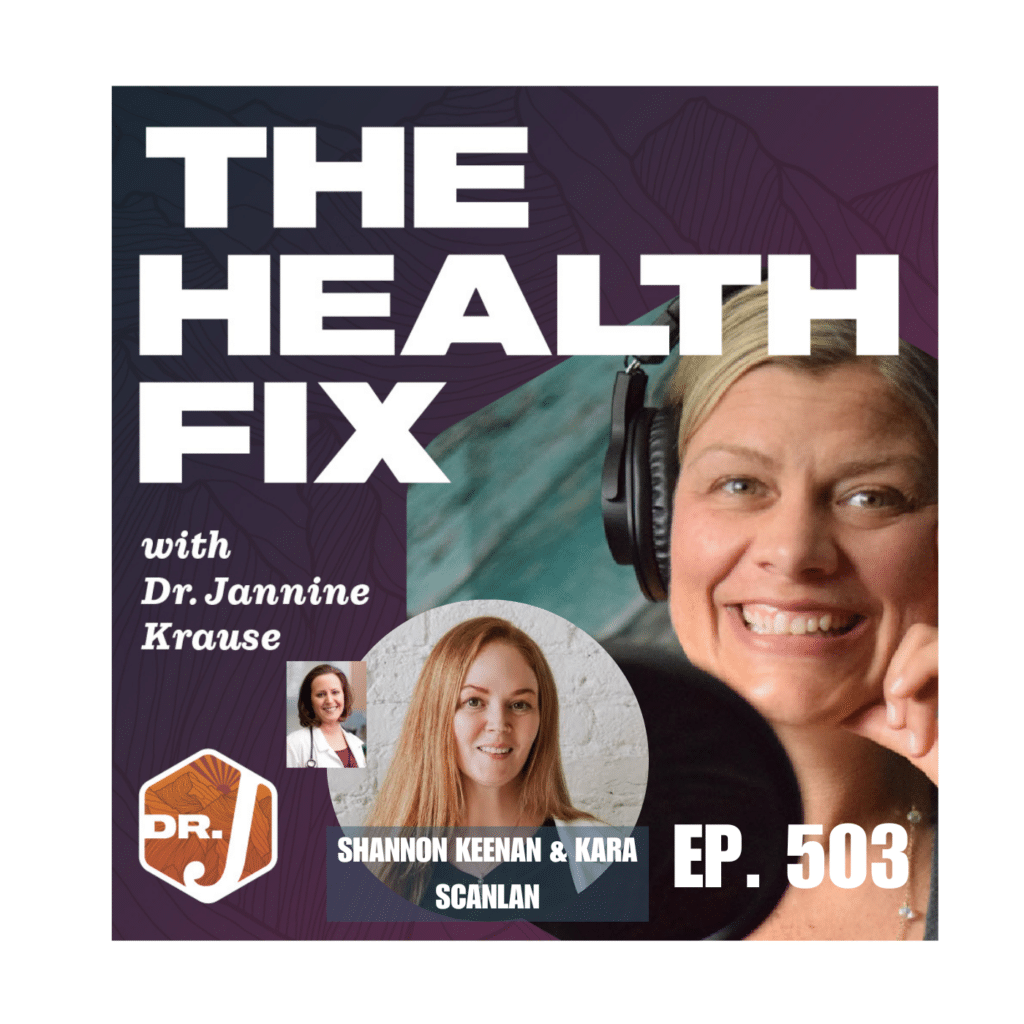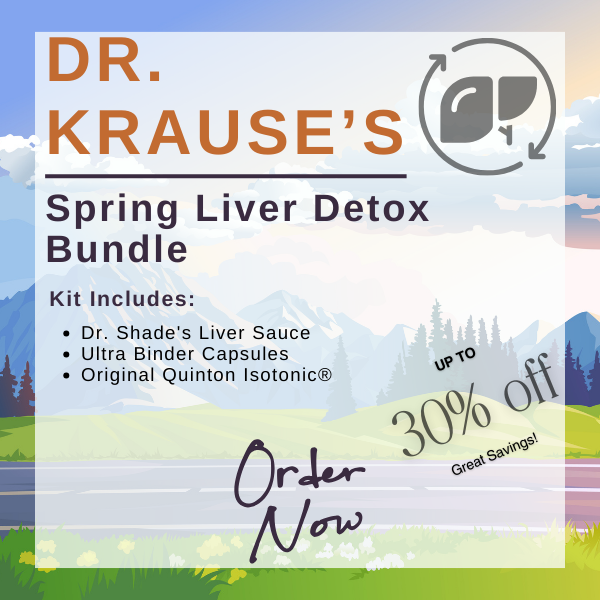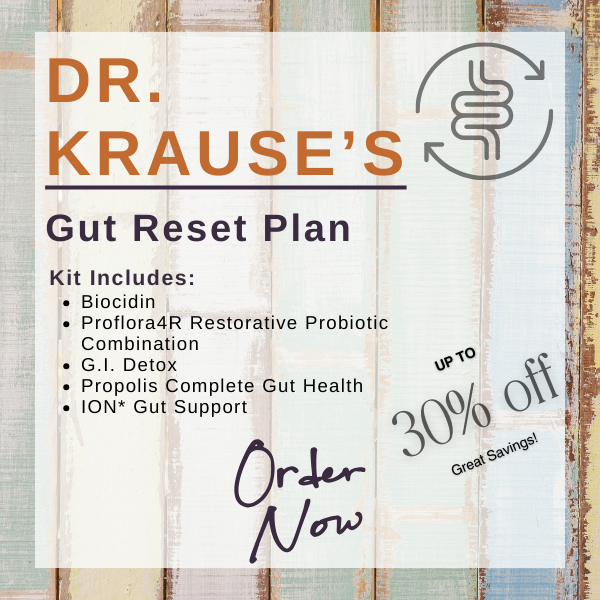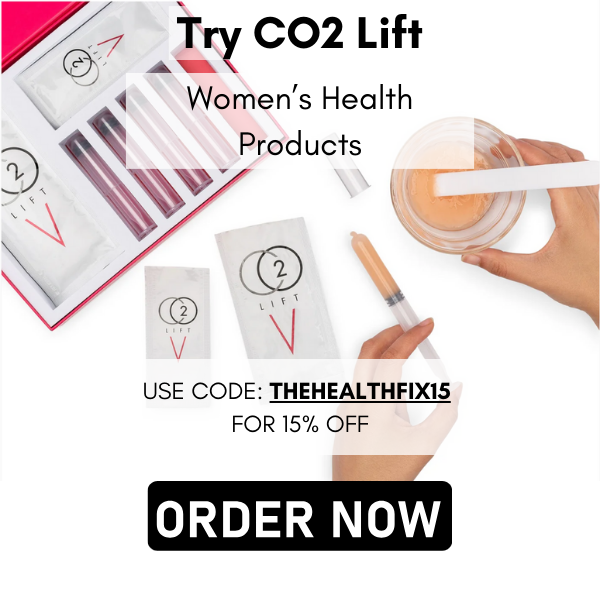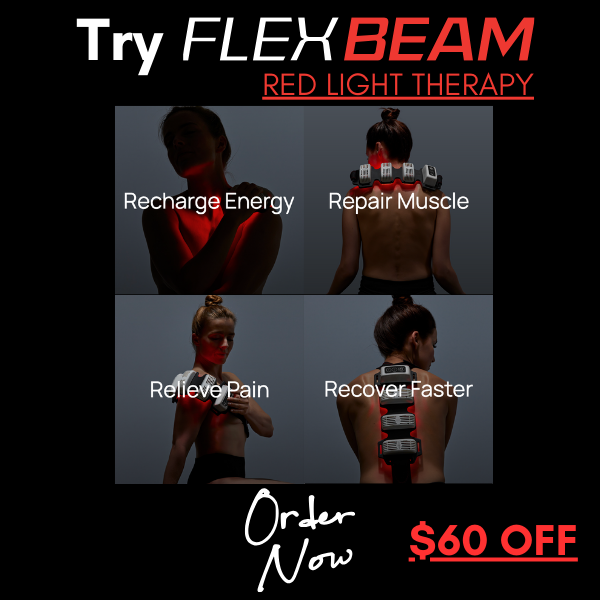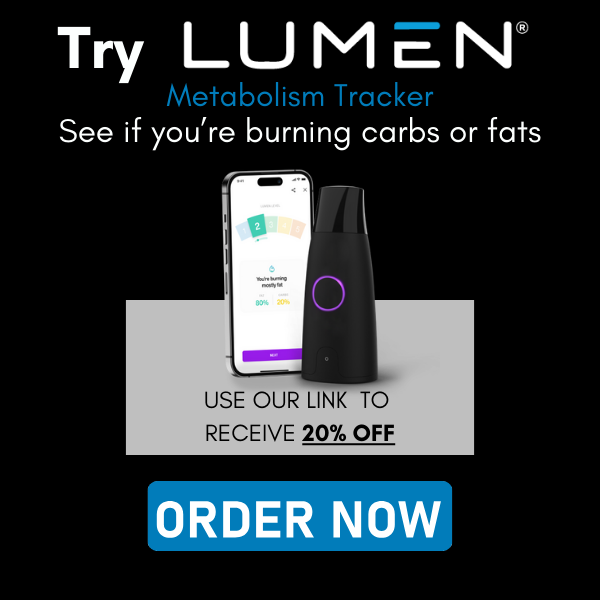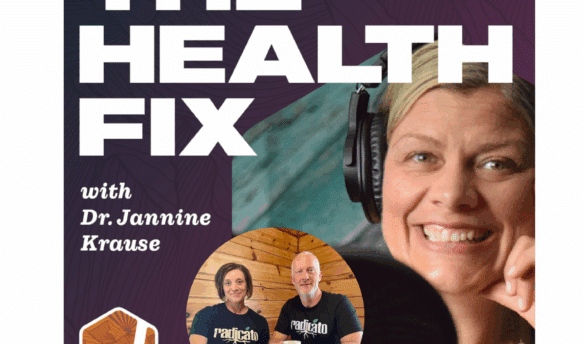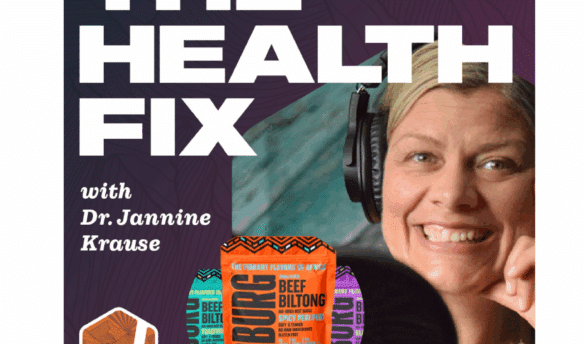Urinary incontinence, bladder, vaginal and pelvic floor issues are common in women of all ages and having children isn’t a prerequisite. Pelvic floor therapy awareness is on the rise but it’s not the only thing you can do to support your bladder, vaginal area and pelvic floor. My podcast guests today are nurse practitioner pals of mine from Tacoma, Washington. Shannon Keenan and Kara Scanlan from Empowered Med Spa are all about helping women thrive at any age. In this episode of The Health Fix Podcast I interview Shannon and Kara on the InMode radio frequency devices they are using to transform bladder, vaginal and pelvic floor health for women of all ages.
Dr. Krause’s Protocols
Instructions Included
Traveling soon? Looking to detox or reset your gut? Try one of Dr. Krause’s Fullscript plans.
What You’ll Learn In This Episode:
- How radio frequency devices are helping women reduce bathroom visits, incontinence and prolapse
- Why using Forma V and V Tone postpartum can prevent pelvic and bladder issues
- How my back pain and stress incontinence vanished after 2 sessions with Forma V and V Tone
- Why less bathroom visits, less urgency, sleeping through the night, reduced pain and improved orgasms are a few of the things InMode radio frequence device clients are raving about
Resources From The Show:
Our Partners
Podcast Transcript
3:27 – Guest’s Backstory
5:44 – Mild to severe incontinence
8:51 – Forma V treatment
10:49 – Transformation story 1
14:30 – Transformation story 2
21:30 – What is a V tone treatment like?
31:40 – What do clients typically feel after a treatment?
38:49 – What other devices or ideas are you looking at to develop to help women?
[Preview] At menopause 20 years ago, you’re done.
You were just a shriveled up grandma,
you couldn’t be sexual,
if it’s fine if you peed your pants, right?
Like, you know, just put on a diaper
and sit in the corner and be quiet.
And he was treating a patient who was 35
who had just had her second baby
and had gone into her OBGYN post-partum and said,
“I’m losing control of my bladder.”
Like, “What should I do?”
And her OBGYN literally just said,
“Well, that’s what happens when you have babies.”
and offered her no solutions whatsoever.
So she had to go and research her own solutions
and luckily he was able to use these technologies
to treat her symptoms
and she was having great relief as well.
[Intro] Welcome to the HealthFix Podcast
where health junkies get their weekly fix of tips, tools
and techniques to have limitless energy,
sharp minds and fit, physiques or life.
JANNINE: Hey, Health Junkies.
On this episode of the HealthFix Podcast,
I’m going to be talking about blattering continents and continents in general, stress
and continents, vaginal issues, vaginal health.
And to do that, I’m bringing on two of my nurse practitioner pals from Tacoma, Washington,
Shannon Keenan, and Cara Scanlon.
Now they’re going to be helping me out to describe the treatment that I received back
earlier this summer when I was in town and holy cow did it blow me away.
two treatments, no more stress and continents. So pain when I sneeze, things of that nature,
jumping rope, I can do it now without being terrified or having to go to the bathroom
before it, during it, after it. The other biggie, my back does not hurt. I have a herniated disc,
but it was connected somehow. There’s some connection there in terms of the pain to pelvic
floor. So we’re going to talk about that. We’re going to talk about what devices they use to help
me out. These are radio frequency devices by a company called in mode. We’re going to
talk about something called the form of V. We’re going to talk about the V tone. We’re
going to talk about amorphous. So you’re going to hear these words. What they are are
devices that really can help change your quality of life. So if you are running to the bathroom
and sometimes having accidents, maybe you have to map out where every bathroom is every time you go.
out or maybe you’re not going out because you’re afraid of what’s going to happen with the bladder
and you’re sick and tired of wearing pads, diapers, depends, etc. all those things.
Not cool. Well, I want you to know you do not have to live like this. There are solutions.
There are ways to help you. And so let’s introduce you to Shana Keenan and Cara Scanlon.
Hey, health junkies. I have a fun podcast for you today because I have some local ladies from
to coma on and I love bringing on my folks from Tacoma, especially in this case because
we’re going to be talking about incontinence and things of that nature where a lot of women
don’t necessarily want to talk about the things that are happening, but there are solutions
and we need to know about it. So Shannon, Keenan and Cara Scanlan, welcome to the health
fix podcast.
GUEST: Thank you so much for having us.
JANNINE: Well, ladies, you are the team that is empowered
med spa and of course with any podcast I always like to start off with how do you
to meet and and how did you two decide that you need to save us ladies from our
aging issues what what was the impetus give us this backstory on the two of you
GUEST: Well I was going through my master’s program to become an earth practitioner
and in my particular program they were to find our own precept mentor’s and so
So I was blowing up Kara’s facility and she graciously responded to one of my facts and
or email and or handwritten letters, agreed to meet with me, graciously took me on as a
student, and then I joke and I say that I just attached myself to her from parents’
fourth.
So, Shannon and I have maintained our friendship since, and when she came across this technology
that we’re going to be talking about.
She reached out to me because I have specialized
in women’s health for 18 years and said,
you have to see this technology.
She invited me to a conference in Portland
and I was just amazed.
I was immediately excited that we had some answers
to some of these problems that women have over our lifetime
that we maybe just don’t want to have surgery.
You know, so it’s exciting.
JANNINE: Yeah, yeah, you know, I think the biggest thing that
Women look at in terms of getting older. I mean, we’ve seen right society shows us like well
There’s the diapers right we see the commercials right the depends start showing up and I was telling Shannon the other day
I like saw
advertisement for depends in a local dollar general because I live in the middle of nowhere and that’s the only story
We have and there was a man who looked ripped and like fit with depends on and I’m like
What are we marketing to here?
What is going on?
And now of course with all the fancy underwear and stuff like that, that we can have highly
absorbent under them.
Like, yeah, that’s nice, but I don’t want to roll that way.
That’s not my jam.
So let’s, let’s jump in and talk a little bit about the different devices that you have.
And I’m going to kind of leave it up to you guys in terms of going through like if someone
is having, let’s say, minimal to moderate types of incontinence issues.
What would we use first? What kind of technology are we thinking about?
And then we’ll go into kind of the more prolapse, more severe situations for folks so that we can
kind of get a baseline from here.
GUEST: So I’ll take the lead on that one just because I myself,
prior to treatment, health had mild symptoms.
And so, you know, I think just owning a uterus and time and gravity will lead many of us to
these conditions later in life. We can public floor, just again, gravity, aging,
law for the elasticity, collagen, and the tissues.
You don’t just see it on the outside. We’re also experiencing it internally.
So for me, a great initial treatment plan would be the V-TOM,
which is the electoral muscular stimulation.
So think of it as like a 10 unit.
We’re creating muscle contractions,
repeated it’s a 30 minute session.
And I think you get somewhere near 300,000 pulses
in that time period, the key was we can’t ever do.
And so we do a series of six of those,
strengthen up the pelvic floor.
I also did one more PS8 session.
and we’ll speak a little bit more to that in a moment
as to what that does for the tissues inside.
After my first V-tone session, my one 30 minute session,
I have not peed, lost my urine with sneezing or coughing
since, not once.
After my first session, I did have a little bit of stress
incontinence when I was playing tug of work with my dog,
but after the second session, that also went away.
So pretty mild symptoms, phenomenal relief,
completed my series of six, I did my one more
of this treatment and I will do another one,
but I’ll forget we’ll speak to that a little bit later.
Phenomenal relief in terms of urinary stress
and continents, virgin continents.
And then also as you and I discussed previously too,
my low back pain is gone.
So I’ve had chronic low back pain for,
well, since February of ’23,
when I decided to go and train for a run a half marathon
without training.
And so not advised.
And then my relief has been profound since then.
JANNINE: Nice.
Yeah, you know, I kind of found the same type of results
from using the V-tone and the form of V-treatment
that you had.
I mean, I only had one technical round,
I mean, two days apart and we quick snuck it into
a quick, quick slash inside two of the V-tone
in one of the form of V and like, yeah, I have not had any sneezing
in contents and I have not had any pain while running.
And it was crazy because I remember during the session,
I was telling you, like, I feel like you’re like,
loosening this little like tension up in my right,
like upper part of my uterus or something or pelvic floor
or something. It was in there deep. I couldn’t tell.
But yeah, I’m still running, still feeling good.
And of course I’m planning to come back,
but I was like, oh my God, I have to tell people about this.
So all right, that’s a little bit on the V tone.
Now tell us a little bit more about
the more extensive treatment for folks
that have a little bit more moderate to severe situations.
GUEST: Sure, so we’ll start with Forma.
Yeah, Forma V is a radio frequency treatment
that’s used to stimulate collagen production.
So we’re trying to improve the elasticity
of the vaginal wall, the bladder,
And also, as you had mentioned, it helps kind of release the fascia.
And in conjunction with the V-tone, what we find is just significant improvement in pelvic floor function.
The form also has the advantage of being able to simulate collagen production externally on the vulva and the labia.
And the advantage to that other than cosmetic is really when we talk about women who are really active
over time are more sensitive parts of our vagina are exposed because our labia lose elasticity and fullness.
And so what I found, especially in my patients who love to run or if they don’t feel chafed after they exercise because those labia
are plump and protecting those more sensitive tissues.
JANNINE: That’s important.
That’s important.
Something to think about that,
like I’ve not personally experienced,
but I know that people do talk about it.
And of course, being in the realm where I am,
we’re working with different creams and things, right?
To help with vaginal lubrication and things of that nature.
I find it that the creams are great,
but they can only go so far.
And that’s where this technology to me is like,
oh my gosh, this is so impressive.
So I’d love to hear from either.
One of you guys can tag team, however you want to go about it.
But I’d love to hear some stories of other clients
in terms of what they were experiencing
and how the different technology has really helped
to change them in terms of their health,
their experiences, different things.
I love stories, we love stories here.
So if you guys have some good ones,
I’d love to hear kind of what your favorite stories are.
GUEST: Well, I think you know my favorite is,
I’m have an 83 year old patient that I’ve been treating.
she’s had stress, mixed incontinence,
overactive bladder for probably a couple of decades now,
had a couple of babies, one naturally, one by Cesarion
has always had a weakened pelvic floor.
Pretty much has been using consumables, pads, diapers,
et cetera, since the second child
because of her incontinence.
She came to me and she told me she wears her watch at night
and she was clocking about 260 steps per night
getting up to void in her bathroom is only maybe 15, 20 feet away from her bedroom.
So which is pretty profound getting up I think probably close to 8 to 10 times a night to
to void.
After probably the second week, so one more CSV session, two V tone sessions, she told
me that she was down to 60 steps per night in terms of her overactive bladder.
Now that her treatment is complete, she was able to go on a cruise where she did not wear
a pad the whole time.
She was only up a couple times at night to void and her quality of life is significant.
I mean, just profound.
Profoundly improved.
She doesn’t have to pee before she leaves the house.
She doesn’t have to pee as soon as she gets to wherever she may be going.
She and her husband are looking to buy an RV and they feel confident now that they can
actually travel without pulling over at every rest stop to allow her to use the restroom.
JANNINE: Oh my goodness. That’s huge. That’s huge. I mean, and especially for so long because being 83 and
then after her second child, my guess was 40 years more than that.
GUEST: Really honestly. Yeah.
Yeah. And you think too, I’ve had her, she’s been my patient for several years, I’ve had her
in pelvic floor therapy in conjunction, I mean, prior to almost two years prior. So
she’s done three or four months since a couple times a year, which is obviously very helpful for
her as well. And I’ve encouraged her to actually continue with PT therapy or pelvic floor therapy
because of the now she has that muscle memory. She can connect which muscle she’s actually
supposed to be contracting as opposed to just thinking of starting and stopping your stream
of your end, she’s actually getting full of public floor movement and contraction.
JANNINE: Wow. I mean, I know for sure, like, I was like, wow, I have never felt these parts of my public
floor before when you had the veto and I was like, oh, wow, what’s this? You know, and it’s cool
because I don’t think many of us can connect exactly what we’re supposed to feel down below,
you know, even, I mean, with PT, public floor PT, you can definitely get a sense, but like,
actually having something contract with that amount of, you know, and folks are listening,
it’s not, it’s not super strong and, and, you know, Shannon and, and Cara will, will help you
directly how strong of a impulse. But like, I actually was able to turn it up after a while after
I got used to, except first I was like, okay, this is weird. This is different. And then as we
turned it up, I was like, wow, that’s kind of cool. Now I know exactly that feeling. And I’ve
actually used that now to be able to connect in while running,
connect in while doing some other physical fitness stuff that I had
had some issues with before. So fascinating there.
GUEST: And that’s what she said too. She said, I can, she’s like, I’ve
never experienced this sensation of contracting those muscles. She
loved it. She absolutely loved it.
JANNINE: No doubt. I’ve no doubt. I’m definitely hooked. So Cara, tell us
a little bit about a story that that you have about some of some
pretty good transformation.
GUEST: So I’m thinking of a 72 year old clan of mine who complained about just not being
rested all the time and it turns out on further discussion that she was also getting up five
to six times a night to empty her bladder. She also had some incontinence like she had to know
know where the bathrooms were at all times.
She had had episodes where she was looking
for a bathroom at a place and lost control of her urine
to the point where she always packed another pair of underwear
and pants with her at all times.
She wore a pad, but she said, you know,
one of the biggest things that bothered her most
was that she had to use so much time and energy
to map out bathrooms, to plan her life
around going to the bathroom.
And that just wears on you, plus her sleep was terrible.
So when she came in for her first treatment,
she actually couldn’t even finish the 15-minute forma
session without going to the bathroom two times.
This is how bad her incontinence was.
And now, after her three forma and six tone sessions,
She says that she gets up maybe one time a night
and she’s sleeping through the night quite often.
She doesn’t worry about mapping out bathrooms
because she knows that she, when her bladder wants
to relax, that she can tense up her pelvic floor
how we’re supposed to so that we can hold in our urine.
And mainly she’s just so happy about the amount of energy
she has because she’s not happy to map her whole life
around her in continents.
JANNINE: Oh gosh, yeah.
I mean, it becomes a full-time job really to research.
Like, okay, if I’m gonna go out.
So then of course it has people not leaving their homes.
And this is what I see too for a lot of my older clients.
Now, you guys have given examples of older clients.
A lot of folks are going, well, I’m not that old.
Is this gonna help me?
And of course I’m 46.
And I think a lot of people will be thinking,
well, could I use this as a preventative type of thing?
if I have some mild symptoms and nothing major.
GUEST: Absolutely, and that’s where I kind of start to gauge too.
Where can we start to get the word out?
And they suppose part of mama is in these patients
who need rehabilitation if they’ve had an injury
or an accident because something like the V-tone,
a series of V-tone could be found in prevention.
And that’s how I’m going to anticipate using it
for the rest of my life is I am now cured, if you will.
Like I’m going to continue to do intermittent sessions
in addition to other modalities,
I’m a fan of a hormone replacement,
needed for vaginal dryness or you’re requiring UTIs.
But I absolutely look at it as a prevention modality
if we can absolutely do that.
There’s so many things that we are better off
as preventing rather than treating down the road.
JANNINE: Yeah, yeah.
Cara, what’s your take?
What have you seen and kind of things you–
GUEST: So, yeah, I mean, I think it’s interesting
Because and Shannon and I often use the examples
of older women because as we age,
we’re not able to produce as much collagen
and the symptoms do tend to be worse.
And if we’re seeing great improvement in this age of women,
then these younger women are definitely going to respond better
when they can still produce large amounts of collagen
and their pelvic floor integrity,
their musculature is stronger and just more receptive to treatment.
When I was in training, I was training with a urogynecologist in Newport, California,
and he was treating a patient who was 35 who had just had her second baby and had gone
into her OBGYN post-partum and said, “I’m losing control of my bladder.
What should I do?”
And her OBGYN literally just said, “Well, that’s what happens when you have babies.”
offered her no solutions whatsoever.
So she had to go and research her own solutions
and luckily he was able to use these technologies
to treat her symptoms and she was having great relief as well.
JANNINE: Oh my gosh.
Yeah, I mean, unfortunately that is common.
I’ve heard all the spectrum of like suck it up.
That’s the way it is.
And you know, it’s like, gosh, I don’t want to live with that.
I don’t want anyone else to either.
Now we’ve talked about urinary incontinence.
One of the other things is fecal incontinence.
Have you guys had any cases where that’s improved
with using this technology as it does impact the public floor?
GUEST: I have not.
I have someone on my radar with whom
it experiences both urinary and fecal incontinence
and it’s a matter of financing for her,
which she’s working on, but I’m very eager to,
she’s got lots of comorbidities, autoimmune stuff,
but she’s always had concerns about fecal incontinence
And, you know, she ebbs and flows through the planet.
She’s on my radar.
She knows about the technology.
So I will keep you posted.
We get the opportunity to treat her specifically.
JANNINE: Sounds good.
GUEST: Yeah, and same here.
I mean, I think what we’ve focused on is, you know,
the technology was developed for incontinence,
for vaginal health.
And so a lot of the clients we’re seeing
are attracted because of that.
And so I do know that they are doing ongoing studies
about fecal incontinence and other things that just have not been released yet.
But as I mentioned, the Eurovanna College is a new port California.
He is part of these studies.
And so we will start seeing more data as those studies are evaluated and concluded.
JANNINE: Awesome. Awesome. Yeah, I think it’s one of those things where nobody wants to talk about it in
the office a lot of times. It’s like pulling teeth to get the information out of my patients,
but it does seem that we are having a lot more of that going on here too as we’re getting older and
you know obviously I’m getting older my practice is getting older so I see that quite quite often.
Now so with now I’d love to kind of go into the technology a little bit more in terms of what
someone would expect when they come into a visit because I think you know we imagine all kinds of
things right as to like what in the world are they doing and you know I talked about the little wand
before on social media and a couple patients were like, what kind of wand is this thing? You know,
in the V-tone in terms of being kind of like a little tear drop kind of device. And so I would
love for you guys to kind of go into like what would a procedure look like you, one of you could
prescribe describe the V-town, maybe the form of the, I don’t know, Ella, you guys do it, you’re the
experts.
GUEST: Okay, so the V-tone as you as you described is a tear-dropped shape,
device it’s inserted into the vagina, it stimulates muscle contraction. It’s
as you mentioned, it’s an interesting feeling, especially when you’ve never
really felt your pelvic floor contract or had been your mind tied to those muscles. But
women should not expect discomfort at all, and it’s important for them to also know with this
technology that we instruct them on how to increase their own public floor stimulation as
as they increase the power that is to the device and they are absolutely in charge of that because
we can’t feel what they’re feeling right. I have some women that you know it dials from
one to fifty and I have some women that get to twelve and they feel like wow this is
really intense and I think I’m going to hang out here. And then the the 72 year old patient that I
mentioned earlier on her third session was like how far off does this go? And she was the first one
to discover it went to 50. So but you know it’s important for women to know that they are in control
of that so that they can be in charge of their own body in that sensation and you know push it
as far as they feel comfortable.
JANNINE: Sure sure I know I didn’t feel like one side of my pelvis during
the first session for like quite a bit of it, I cannot feel the right side, which is the side
that I have a discrimination on that is technically a surgical case, but I refuse surgery. And now
that I’m seeing that this is working for me, I’m like, well, why would I get surgery now?
But I did notice that, yeah, I didn’t feel it. I don’t think I could go past 12. I don’t know
what that says about me, but I think it’s just it is what it is. We keep it where we can handle it.
Now, what about the form of V because that felt like I was having a warm like, like a hot
stone massage to my vaginal tissue. And for those of you who are like, what? I would not want
heat there. I’m like, guys, it actually felt relaxing. So I’m going to let you take away with
that, Shannon and kind of give us the rundown on what’s happening.
GUEST: Sure. So it is a wand. I would
say absolutely. I apologize. I didn’t bring any up here to demonstrate, but it’s probably
slightly whiter than the, with the my finger.
It’s very narrow.
The tip does spread out a little bit more
because it has that bipolar radio frequency
at the tip of the wand.
We use a little lubrication, either ultrasound gel
or some water-based lubricant to insert the wand.
There are measurements.
So we know basically we will get to,
if you have a cervix, we will get to the cervix
cold back and not insert beyond that.
If you don’t have a cervix, we, you know,
maybe I doubt totally, but maybe hit the vaginal wall
and say, “Think, pull back.”
Once that, we’ve got the safe measurements down.
We’re literally just using that wand
and then around the vaginal wall on the tissue, heating up.
In mode is the manufacturer of this device,
and it has been repeatedly said that in mode
is the absolute master of temperature feedback,
milliseconds of feedback.
So we have an indication on our screen
that we are heating you to the desired temperature
with the appropriate amount of energy
so that we are not overheating the tissue.
But the point is to look at enough heat,
hot stone, if you will, to the tissue
that we’re creating an inflammatory response.
JANNINE: Unfortunately, we were having a little bit
of technological issues with the audio in this podcast.
So I’m gonna jump in and talk about what Shannon was saying
about the Forma V.
So the Forma V is a radio frequency device.
It’s a wand.
It’s about an inch in diameter.
It’s then it’s inserted vaginally,
which may sound kind of scary,
but honestly you can barely feel it.
It almost feels like someone’s giving you
an internal massage.
Now while that might sound kind of creepy,
the truth is I felt the heat.
I felt the device sliding on the vaginal wall
and it felt like someone was releasing the tissue.
Much like myofascial kind of slow spreading massage,
it felt like that.
In fact, at one point, I felt something in my right upper vaginal area release,
which is crazy because I’m not going to get a massage really in that area.
And so having a device that can get in there,
get some heat in the area and help you is incredible.
And so literally Shannon wanted folks to know that when you have the device in,
if you, if it’s too warm, you know,
she can always control that.
If it feels, if something feels off,
it’s triggering something for you,
she can always stop the treatment.
It’s not like you’re, once you’re in, you’re committed.
You can definitely take a little breaks,
but it is common, according to Shannon,
that you can feel releases, and many clients
will talk about feeling a release much like I did.
In fact, during the actual session, I was like,
“Whoa, whoa, I can feel something.”
And so we had a really good laugh about that,
but the truth is, is that these things,
How else are we going to have that, right?
A lot of times I have patients coming in my practice
they’re talking about pelvic floor pain.
They’re talking about pain with sex
and they’re like, I don’t know what to do.
Nothing seems to relieve it.
Well, this could be your answer.
‘Cause I’ll be honest, I tried pelvic floor therapy,
I tried different things in it.
Nothing seems to get that one little spot.
Shannon got it with the form of V.
So something I really want you guys to be thinking about here,
you know, we have the capacity to fully take care of our bodies.
Huge, huge. So with the one, she can also work not only on the internal vaginal wall and the
vaginal tissue, she can work around the urethral meatus, which is the opening where you urinate.
She can also work on your labia majora, the bigger lips and the labia minora, the little lips,
because sometimes those will prolapse, meaning though they will drop down, especially after you’ve
had multiple children.
And this is one way to help tighten things up.
Because what the form of V is doing
is that with the heat and the radio frequency,
it’s creating a little bit of an inflammatory response.
It’s triggering you to make more collagen,
and also to bring more blood flow to the area.
So much like the treatments that we have on our face,
right, microneedling, all of the different radio frequency
treatments you could do on your face.
Same thing applies to your vaginal tissue.
It’s the same skin.
I don’t know why we have this disconnect.
But here we are, helping to really spread the word
that there are options for you.
There are options for you.
Cara says it really well later on the podcast.
So I’m not gonna just tease you a little bit.
She says it really well about women now.
We don’t wanna be sitting around.
We wanna be doing things.
We wanna be sexual.
We wanna feel good.
these kind of devices can help you with that.
And I can’t tell you how good I feel now being able to run
and not have pain.
Incredible.
I’ve worked on my feet, I’ve worked on my knees,
I’ve worked on my hips, I’ve worked on my low back.
Go figure.
It was this one little thing in that pelvic floor.
So now even if there’s tenderness,
even if there’s scar tissue in the vaginal wall,
in the vaginal area,
Shannon can work with that with the form of E.
So this is something to really think about.
prolapse also can be helped with this too.
And so really it’s about a 15 to 20 minute treatment
and she’s definitely gonna be listening to you.
You know, and of course I don’t imagine
that everyone’s gonna be able to go to Tacoma Washington.
There are other folks trained out there
will make sure that you can see where folks may be
in your area.
But the point is is you’re in control of these treatments.
15 to 20 minutes, repeat them at a minimum of three times.
I’ve already done two and I can tell you I feel amazing.
I am going to do some more, no doubt.
And I’m going to do them as a preventative.
Kind of like every year, just repeat to help
keep my tissue healthy.
Much like I would work on my skin.
I’m gonna work on my vaginal skin too.
All right.
Now after the treatment, I did feel like something was done.
You feel it for like one to three days.
She said that’s absolutely common.
And it’s also common to, you know,
just feel maybe even a little itching.
As the body’s working to heal the area,
Carol will talk about that a little bit later
with the Morpheus treatment.
Now, also there’s downtime.
Yeah, you might feel it for one to three days.
There’s also like best to lay off a sex
for at least two days just to let the area heal.
Which I think that’s fair enough
after you’ve spent the money to help heal up something,
why not let it rest a little bit?
And then it can be much better
because as Shenan mentions the orgasms
and things of that nature are even better
once you’ve used this device for a little while.
So something to also think about.
All right, let’s get back into the podcast.
Afterwards, I did feel like it kind of felt
like I had had sex, right?
‘Cause there was a lot of like motion
to the vaginal wall and it lasted for like three days.
I felt that quite a bit and I was like,
“Wow, I must have really needed some,
some, I guess circulation to the area.
What’s typical for people to feel afterwards?
Do you have like a gauge on that?
GUEST: That’s why you just described it.
Usually about two, three days where you might feel
like there was some intercourse
or there was a treatment that you had a treatment done.
More so I think if we do longer sessions
at the goals to short sessions,
again, we’re facing an outpatient tolerance.
So usually we’ll check in with my patients
when they come over for a first one.
JANNINE: Soothing warm there and it definitely works to just relax.
I felt like my whole like urine wall, I’m probably even some of my public floor.
I feel like it was just really relaxing.
I had to take my headphones off there, squeezing my head too much today and take those guys
off.
There we go.
Get comfortable.
So, you know, when, well, let’s put this way afterwards.
I did feel like it kind of felt like I had had sex, right?
’cause there was a lot of motion to the vaginal wall
and it lasted for like three days.
I felt that quite a bit and I was like,
“Wow, I must have really needed some,
some, I guess circulation.”
Now I’m gonna have Kara talk all about
the Morpheus with microneedling.
So it sounds super scary to have microneedling
in your vaginal tissue,
know that it can be numbed up, not the end of the world.
And that in a lot of cases, the lowered pain receptors
in the vaginal area make it really easy to do.
Much different than having micronealing on your face.
But care is the expert, let’s have her tell you.
GUEST: In moderate to severe symptoms,
we use a device called Morpheus V,
which is radio frequency,
but in conjunction with that is microneedling.
And as we’ve said before, we know a lot of women cringe
when they think about needles in the vagina,
But it’s important for women to know that first of all,
we don’t have a lot of nerve endings in the vaginal canal.
So as far as that goes, it would be minimally painful.
However, we also numb women up so that they only feel pressure.
And what this device does is it passes radio frequency
at different depths for deeper collagen stimulation
so that we’re getting better elasticity
and better tissue rejuvenation in women
with moderate to severe symptoms.
And this of course includes the wall of the bladder
that sits anteriorly in the vagina.
It can help improve blood flow and collagen stimulation
in the urethra and urethral meadus to help protect us
from leakage and from recurrent urinary tract infections.
It can improve blood flow to the clitoris
and women find that they may have easier
to obtain orgasms or even more satisfying orgasms.
But regardless, this technology is used
for the more severe cases or women who don’t respond
to the less invasive technologies.
And I think we talked about downtime before
and the downtime in this is a little longer.
women are sore for a couple of days.
You can’t have vaginal intercourse
for probably two to five days.
So we have women plan for that.
And sometimes there is some post-treatment itching
as they heal.
But overall, what we’re seeing is that they are back
to baseline with improvement of symptoms often
within a week.
JANNINE: Kara mentions improved symptoms in a week.
Whoa.
Especially in severe cases with prolapse and–
GUEST: in order to really maximize, you know,
kind of invest in this.
We want you to have maximal results.
And so I sent her back to her primary care and said,
“Hey, go ahead and talk to her about vaginal estrogen,
“at least temporarily.”
And I wanted her to be on that for at least a month
before she came in for her first treatment
so that she can get really good results
because if her tissue isn’t estrogenized,
then it’s not gonna respond as well.
And we even talked about just briefly
that she may need surgery in the future,
but as Shannon spoke about the evolve,
if she does need surgery, improving her tissues
and improving her pelvic floor muscles
will make her surgical outcome that much better as well.
So we’re not necessarily saying we are a solution to surgery,
but even if a woman needs surgery
to maximize outcomes and to really make it so
they get maximal relief from whatever symptoms
they’re suffering from.
This can be an integral part of their treatment plan.
JANNINE: That makes sense and I’m glad you bring that up
because yeah, I mean, I think even Shannon and I
saw someone on Instagram that was kind of saying,
“Yeah, it only gave me 50% results.”
And we’re like, “Well, yeah, but where did you start from?”
So…
GUEST: Well, and you know, if you’re only paying 50% of the time
to me that seems like a great thing for you to do.
I think it was, I think we have to realize
that we cannot turn back the clock 100%, right?
We’re not gonna turn your pelvic floor
into the pelvic floor of a 20 year old
who has never had children,
but we can help turn that back some
and give you significant improvement
and quality of life because really it wasn’t until
about 20 years ago in medicine
that we even started looking to the quality of life of women,
especially post-menopausal, right?
At menopause, 20 years ago, you’re done.
You were just a shriveled up grandma,
you couldn’t be sexual, if it’s fine, if you peed your pants,
right?
Just put on a diaper and sit in the corner and be quiet.
And we know that women want to have amazing quality of life.
We live a third of our lives in menopause.
And we want to be sexual beings, as much as that,
we feel like we need that in our lives post-menopausal as well.
And so I think it’s women standing up and demanding
to have this quality of life and to have improvement
in their quality of life that has really started changing
the tide, but we have a long way to go.
JANNINE: Absolutely, absolutely.
I mean, I think we’re just starting to really gain momentum.
And I think that, yeah, we have a lot of different,
you know, things that are gonna probably come up
over the next couple of years and technology is going to keep getting better and better.
And it sounds like you guys are at the forefront of it.
So you’ll stay on top of the next evolutions of the V-forma and all of the things here
and kind of keep moving forward.
So of course, having said that, my next question is, all right, what’s next?
What kind of things are you looking at to add to help women at this point?
GUEST: As far as devices go, it works good for this unit.
I think when you take on a new device, you always are good and relieved to a degree right
to say, “Okay, it’s doing what the white papers are saying.
It’s doing what the doctors, we trained what they’re saying.”
Now it’s our turn to maximize the results for our patients.
We’re figuring out more and more about, okay, maybe our gals with more serious or significant
symptoms.
Maybe we need an extra couple of V-tones.
Maybe when we initially thought of forma was going to do it, maybe we need to switch
to more for us.
So for us, it’s the anecdotal pieces of maximizing patient treatment outcomes.
So I think for me, I’d rather just focus on maximizing outcomes than the next device.
However, I will say the device that we have also does do, we talked about the external
of the tone with skin-to-non-invasive, the device still does have a more fierce face
and a more fierce body, and those technologies continue to improve in terms of safety and
efficacy.
So, this device will also can do, if you are concerned, about fine lines wrinkles, needing
to regenerate some collagen in the face, neck,
declite, or around the abdomen, arms, et cetera,
this device will do that as well.
And then again, that technology continues to improve
just because of the sheer research
and determination of the unknown company.
JANNINE: Yeah, yeah, I know that makes sense.
That makes sense.
I think it’s just, you can outside the box
and also thinking about like, yeah,
how can you enhance the,
Like what’s going to get the most effect in terms of treatment
protocols and things of that nature?
So all good stuff, all good stuff.
Gosh, I’m glad you guys are local.
I’m glad we have options for patients in Tacoma.
And of course, if folks are out of state, you can always pop into.
There’s no saying that these guys wouldn’t take someone that came in from out of town.
I’m guessing you may even have folks that are coming from like across the
across the bridge and also probably on the other side of the state too, sometimes.
GUEST: Absolutely, as far as we know, there’s only one other,
there’s one other device in Western Washington,
it’s up north and from what we hear, of course,
what you hear is maybe not always what’s happening,
but that they are not doing the Morpheus V.
And what we have found is,
some Morpheus V has a really great niche
and is essential in a lot of women’s care.
And if we wanna maximize outcomes,
that we have to have that available.
And so as Shannon was saying, we sometimes switch gear.
I had a woman who started on forma.
And when she did not respond as well as we had hoped,
we switched to Morpheus and we’re just seeing
just amazing response from that.
And she was nervous about it ’cause she’s had Morpheus face
and she found that painful,
but this she finds completely comfortable.
So it’s important for us to make sure
that our patients are getting the best outcomes
that they can get.
And sometimes we have to switch plan of care, but we’re more than willing to do that.
JANNINE: Awesome.
Awesome.
I have no doubt that you guys are going to be helping a lot of folks.
And I’m really glad that I know you and have this resource.
Thanks again for coming on today.
I really appreciate it.
Thank you so much.
It’s really awesome and just appreciate you reach out.
Thank you.
No problem.
Empowered med spot.
Just in case you guys are wondering, maybe you’re in the Tacoma area is located
at 1310 South Union Building A, it’s suite 202.
And if you’re looking for them on Google Maps
or whatever, it’s the zip code 9405.
If you wanna get in touch with them via phone,
it’s 2532404543.
Now, if you’re not in the Tacoma, Washington area,
that is okay.
Head over to my podcast notes at doctor spelled out
JKRAUSEND.com.
and I will have the listening for how to find practitioners in your area. Thanks for watching
another episode of the HealthFix Podcast. Have a great day whatever you’re doing.
Hey fellow Health Junkie, thanks for listening to the HealthFix Podcast. If you enjoyed tuning in,
please help support me to get the word out about the podcast.
